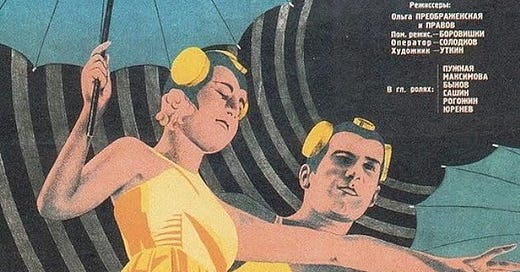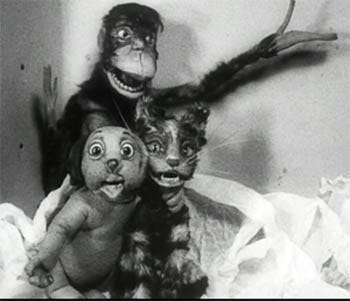2 Propaganda Films From The Soviet Union: When the party took over the circus! Plus, Banking schemes!
THE LAST ATTRACTION is about the party taking over the circus! THE CASE OF THE 3 MILLION a banker schemes & his wife prepares to attack!
The Last Attraction
Based on a story by Marietta Shaginyan. A circus is travelling the roads of the civil war. The actors perform for the Reds and for the Whites alike. Then the circus is requisitioned and the performers are now subordinate to a Red Army political department. Thus the side-show becomes a propaganda carriage and the young tight-rope walkers Serge and Masha will sort out the political situation, conscientiously join the Red Army and take part in the battle against Denikin.
THE CASE OF THE 3 MILLION
To prepare grounds for yet another speculation, the banker Ornano (Mikhail Klimov) sells his house for three million rubles, but since it the weekend he cannot deposit the money in a bank and must carry it with him. He leaves the city for his country home for a short period of time, only return right away owing to his worries about the money. His wife sends a note to her lover telling him that there are three million in the house.
Here are past posts on Soviet films:
Silent Shorts From The Soviet Union: From Propaganda To Camp Part 1
The Adventures of Baron Munchausen (1929 Cartoon)
The Soviet Animated Sci-Fi Propaganda Film: INTERPLANETARY REVOLUTION
In 1924, Zenon Komisarenko, Youry Merkulov and Nikolai Khodataev produced Interplanetary Revolution, which might just be one of the strangest Soviet propaganda films ever produced.
The Magic Of Ladislas Starevich: The Magic Of The Re-Animator
Ladislas Starevich and daughter creating these amazing films with dead bugs, rats and frogs... and they are wonderful!
Behind the paywall: Realism and Socialist Realism in Soviet Cinema
In her talk, Elizabeth Papazian will discuss reconsidering the problem of “realism” in Russian/Soviet cinema of the Stalin era. If, as Siegfried Kracauer argues, film can counter the numbing, hypnosis, or “glossing over” of gaps and contradictions through its capacity “to reveal things in their habitual, subconscious interdependence with human life” (Hansen), can a similar resistance to the “fake spectacle” of socialist realism occur from within socialist realist films themselves? This talk will propose four modes of “access to the real” that can be found in films of the Stalin era: a historical/documentary mode; a mode of access through concrete “detail”; an “impossible” or “utopian” mode; and a mode of “exaltation of the real, even in its horror” (Badiou). The series is organized by Katherine M.H. Reischl (Department of Slavic Languages & Literatures)”
Keep reading with a 7-day free trial
Subscribe to Classics Of The Silent Screen to keep reading this post and get 7 days of free access to the full post archives.







